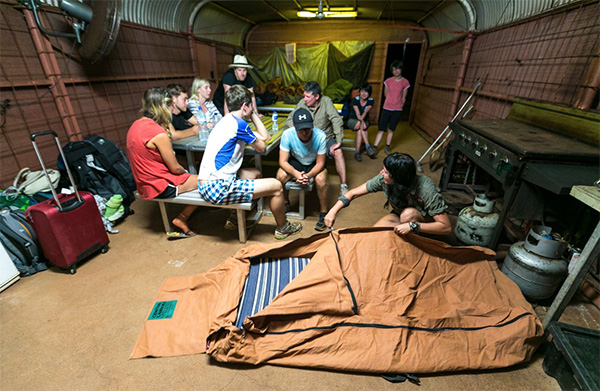
How To Survive Camping In The Australian Outback
Feature photo courtesy of Mulgas Adventures
Adventurer-extraordinaire Bear Grylls said: ‘You only get one chance at life and you have to grab it boldly’. Nothing says ‘grabbing life by the horns’ quite as much as venturing into Australian Outback territory for a camping trip does. Camping in the Australian Outback should be on the bucket list of every self-proclaimed adventurer. Outback camping is a humbling experience and one you will cherish for the rest of your life. From the magnificent scenery that includes the world-renowned Ayers Rock to an unsurpassed tranquillity, a trip to one of the most relentless and diverse landscapes on earth have a lot to offer the eager adventurer. Despite being hailed as one of the most dangerous natural regions in the world, a few simple guidelines will keep you safe during your expedition to the land down under.
Don’t travel in the middle of winter
The Outback is known for its scorching temperature which often reaches above 40 degrees Celsius, which is why it tends to get overcrowded during winter when it is perceived as being more comfortable. Even the most popular destinations, however, can lose some of its appeals if you have to share it with hundreds of other campers and sightseers. If you want a more wholesome, secluded adventure, consider traveling during the shoulder season or even summer itself. While you might have to contend with the blazing sun at times, you at least don’t have to share your personal space with a group of rowdy tourists
Choose the right tent for your cause
When you camp in the Outback you need to have a tent that is raised off the ground or has an integrated floor (or both). Mesh windows are also a must when it comes to keeping bees, wasps, flies, and mosquitoes at bay. Take an extra tarp with you that can be tied over your tent if you find the temperature dropping too much at night. The outdoor utility market is inundated with a variety of camping solutions ranging from simple swags to camping trailers and roof-top tents. The option you settle on will be mostly dependent on who you plan to camp with. While swags are ideal for campers who prefer to sleep alone for a night or two, touring tents are generally a better choice for couples and small families. Even your car or truck can be transformed into sleeping quarters if you prefer the security offered by the metal structure of a vehicle. Investing in purpose-designed truck bed tents or similar alternatives for your car can be ideal if sleeping directly under the stars doesn’t appeal.
Remember the fly nets and first-aid box
There is a reason why the Outback is known as the Wild West of Australia. Australia is home to a multitude of snakes, spiders and other creatures that you may, or may not, encounter while camping in the Outback. Although you are more likely to encounter a swarm or five of persistently pesky flies, there is the odd chance that you will make the acquaintance of a more dubious desert-inhabitant. A well-stocked first-aid box is essential as stings, bites and other accidents may occur when you are far from professional medical assistance. A number of upmarket campsites and holiday resorts may have qualified medical personnel on-site but it is best not to take any chances and be as prepared as possible for anything the Outback may throw at you.
There is no reason to fear the Outback if you conduct your research and come fully prepared. It will provide you with the perfect opportunity not only to get acquainted with rural Australia but do engage in a healthy amount of soul-searching amidst the dunes of one of the Outback deserts as well. The next time the travel bug bites, pick up a map, gather your camping gear and embark on what can only turn out to be the adventure of a lifetime.
[divider]
Travel from Alice Springs to Darwin
Discover the best Glamping in Australia
Let’s go on a Fraser Island 4wd tour
